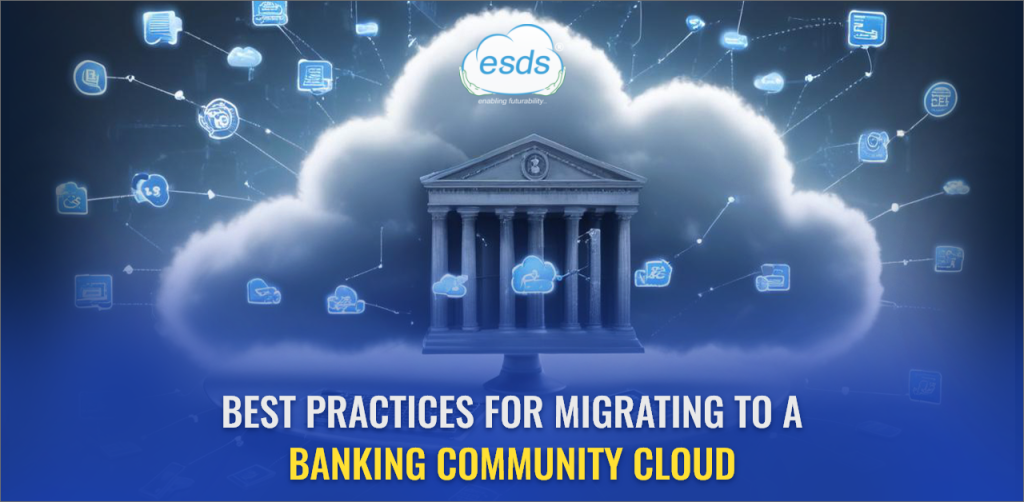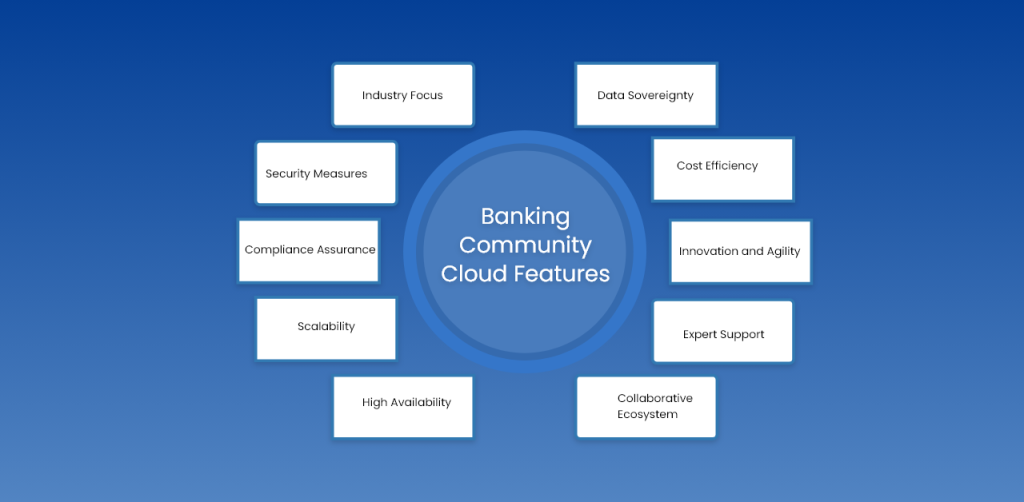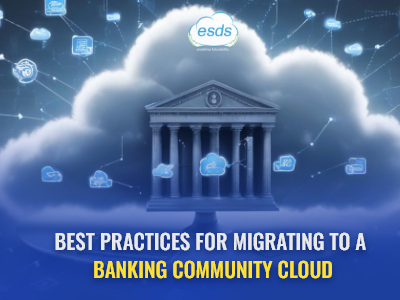Best Practices for Migrating to a Banking Community Cloud

Modern technology turns the cloud into a corporate asset rather than merely a place to store data, enabling businesses to utilize data and progress fully. Community banks and credit unions are among the numerous companies migrating their core and ancillary systems to the cloud. Financial organizations can use the banking community cloud to manage costs, adhere to rules, and save team time for revenue-generating duties. The first IT jobs moved to the cloud frequently include disaster recovery, backups, and network server management.
This article will cover the significance of a well-thought-out plan for transferring data to the banking community cloud to prevent problems.
Banking Community Cloud Overview
A Banking Community Cloud is a cloud computing environment created explicitly for banks and financial organizations. It provides cost-effective solutions through shared resources and subscription models and offers a safe and legal platform for storing sensitive financial data. This unique approach meets banks’ needs, allowing them to concentrate on innovation and core operations.
Cloud hosting is now nearly the only option for essential financial services. Internal accounting applications, voice response systems, Microsoft applications, loan applications, and others are installed on in-house servers, also known as the servers hosting ancillary systems. Managing all the applications required to run a profitable and effective financial institution involves a lot of Infrastructure.

While banks have benefited from the cloud by freeing up scarce in-house staff to concentrate on key strategic projects rather than worrying about IT infrastructure, all financial institutions need to follow certain procedures. Before transferring your bank’s vital data to the cloud, consider the following points.
Best Practices for Migrating to a Banking Community Cloud
Your Bank’s Corporate Strategy is Important
Every bank has a different corporate strategy based on market conditions.
These plans may include:
- Increasing the range of services provided.
- Constructing additional branches.
- Merging with another bank.
- Considering being purchased.
This approach should outline the plan for what should be moved to the cloud and how it should be done.
Analyze the Application Opportunities
Your IT team must know the application requirements before implementing the banking community cloud. Assess the IT infrastructure needs of every application and look for ways to reduce the amount of internal IT resources used. Then, applications that can be transferred to the cloud can be found.
Choose The Right Banking Community Cloud
The aim of moving to the cloud is to eliminate your bank’s present internal servers, software, and infrastructure. This also eliminates the managerial duties that go along with them, freeing your IT staff to work on more strategically important tasks.
Colocation
Relocating your servers to a data center or colocation site may seem appealing. This substitute moves these essential resources from the bank premises to a readily accessible location. Furthermore, it doesn’t necessitate significant changes to servers’ and apps’ configurations.
Infrastructure as a Service (IaaS)
Switch to an Infrastructure as a Service (IaaS) model, where you pay a service provider to lease out the required server capacity rather than physically moving your servers. You can access the servers remotely to install, execute, and maintain your apps. This is a potentially tricky choice. The financial institution and IT staff still need to manage the technical specifications and procedures, which can be fairly costly. IT staff must simultaneously replace all networking and reinstall all apps in a new environment, which is laborious and time-consuming.
Software as a Service (SaaS)
Banks are using the Software as a Service (SaaS) model, which includes a software licensing fee and a delivery model. Subscription-based licensing and provider hosting eliminate the need for extra infrastructure for software. Financial institutions can apply straight from a browser. Since the developer manages the infrastructure, there’s no need for additional maintenance.
How does ESDS’ Banking Community Cloud make a difference?
The ESDS Banking community cloud offers dynamic IT governance that benefits India’s Banking, Financial Services, and Insurance (BFSI) business. ESDS Indian data centers specially protect Indian banks’ vital business data inside Indian territory. By automating several tasks, the Banking Community Cloud has changed the perception of the BFSI industry, formerly associated with a convoluted IT architecture and mountains of paperwork. The result is a paperless workplace with digital services.
When banks require cutting-edge data center facilities backed by elite project engineers, they come to ESDS, where we act as a one-stop shop for these clients. ESDS also offers turnkey data center facilities. Based on the needs of our client’s businesses, we may design and construct a data center with full operational capability.
- Why no backup plans even after repeated global IT failures? - February 25, 2025
- Can BFSI community cloud solve data security challenges in banks? - February 3, 2025
- How to Assess SOC-as-a-Service Factors, Benefits, and Challenges? - January 7, 2025
